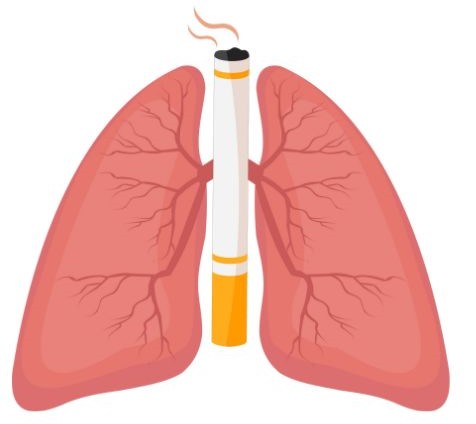Nicotine, a highly addictive substance found in tobacco products, can have a significant impact on both physical health and mental well-being. For individuals trying to quit smoking or reduce their nicotine intake, understanding how long nicotine stays in the body can be crucial for managing withdrawal symptoms and assessing their progress. This article provides an in-depth look at nicotine’s presence in the body, including factors that influence its duration, detection methods, and implications for health.
Understanding Nicotine Metabolism
1. Absorption and Distribution
Rapid Absorption:
- When nicotine is inhaled through smoking, it is absorbed quickly through the lungs and enters the bloodstream within seconds. If consumed via other methods, such as chewing tobacco or using nicotine patches, absorption occurs at a slower rate but is still effective.
Distribution:
- Once in the bloodstream, nicotine is distributed throughout the body, reaching the brain within minutes. It binds to nicotinic acetylcholine receptors, leading to the release of neurotransmitters such as dopamine, which contributes to the drug’s addictive properties.
2. Metabolic Pathways
Nicotine is primarily metabolized in the liver through two main pathways:
Primary Pathway: Conversion to Cotinine
- CYP2A6 Enzyme: The main metabolic pathway involves the enzyme cytochrome P450 2A6 (CYP2A6), which converts nicotine into cotinine. This metabolite is less biologically active than nicotine but has a longer half-life, making it useful for assessing nicotine exposure.
- Half-Life of Cotinine: Cotinine has a half-life of about 16 hours, allowing it to remain detectable in the body long after nicotine has been eliminated.
Secondary Pathways:
- Nornicotine and Other Metabolites: Nicotine can also be metabolized into several other compounds, including nornicotine and nicotine N-oxide, although these are produced in smaller quantities.
3. Elimination from the Body
Renal Excretion:
- Both nicotine and its metabolites are primarily eliminated from the body through urine. About 70-80% of nicotine is excreted as cotinine, while other metabolites and a small amount of unchanged nicotine are also excreted.
Factors Affecting Elimination:
- pH of Urine: The acidity or alkalinity of urine can influence nicotine’s excretion. Acidic urine enhances nicotine reabsorption, while alkaline urine promotes its excretion, potentially extending its presence in the body.
4. Factors Influencing Nicotine Metabolism
Several factors can impact how quickly nicotine is metabolized and eliminated:
1. Genetic Variations:
- Genetic differences in the CYP2A6 enzyme can lead to variations in nicotine metabolism. Some individuals metabolize nicotine quickly (rapid metabolizers), while others do so more slowly (slow metabolizers). This genetic variability can influence addiction levels and the effectiveness of cessation strategies.
2. Age:
- Metabolism tends to slow with age, which may result in longer nicotine presence in the bodies of older adults compared to younger individuals.
3. Sex:
- Studies suggest that women may metabolize nicotine more slowly than men, potentially due to hormonal differences. This can affect how quickly they experience withdrawal symptoms when quitting.
4. Overall Health:
- Liver health plays a significant role in nicotine metabolism. Conditions that impair liver function can lead to slower processing and elimination of nicotine.
5. Smoking Behavior:
- The frequency and amount of nicotine consumption can affect metabolic rates. Regular smokers may develop a tolerance that influences their metabolism, while occasional users may have quicker elimination rates.
6. Diet and Lifestyle:
- Certain foods and lifestyle choices can impact metabolic processes. For example, diets rich in cruciferous vegetables may enhance the activity of enzymes involved in nicotine metabolism. Additionally, hydration levels can influence urine pH and, consequently, nicotine excretion.
5. Clinical Implications of Nicotine Metabolism
Nicotine Replacement Therapy (NRT):
- Understanding nicotine metabolism is crucial for designing effective nicotine replacement therapies. NRT products are intended to provide a controlled dose of nicotine to reduce withdrawal symptoms while avoiding the harmful effects of smoking.
Assessing Smoking Status:
- Healthcare providers often use cotinine levels to assess smoking status and tailor cessation programs. Knowing how long nicotine and cotinine stay in the system helps providers determine appropriate monitoring periods.
Withdrawal Management:
- Recognizing individual metabolic differences can aid in predicting withdrawal experiences and tailoring cessation support. Rapid metabolizers may experience more intense cravings as nicotine clears from their system faster.
The metabolism of nicotine is a complex process influenced by various biological and environmental factors. Understanding how nicotine is absorbed, metabolized, and eliminated from the body can provide valuable insights for individuals looking to quit smoking and healthcare providers designing effective cessation strategies. By recognizing these mechanisms, individuals can make informed decisions about their nicotine use and develop effective plans for reducing dependence.
How Long Does Nicotine Stay in the System?
The duration that nicotine remains detectable in the body can vary based on several factors, including the method of consumption, individual metabolism, and frequency of use. Here’s a general breakdown of how long nicotine and its metabolites can be detected in different biological samples:
1. Blood
- Nicotine: Generally detectable for 1-3 days after the last use.
- Cotinine: Can be detected for up to 10 days.
2. Urine
- Nicotine: Typically detectable for 3-4 days.
- Cotinine: Usually remains detectable for 7-14 days, and in some cases, longer for heavy smokers.
3. Saliva
- Nicotine: Detectable for 1-4 days.
- Cotinine: Can be found for up to 10 days.
4. Hair
- Cotinine: Can be detected in hair follicles for up to 90 days or longer, depending on hair growth rates and the amount of nicotine exposure.
Factors Influencing Nicotine Duration in the Body
Several individual and lifestyle factors can affect how long nicotine stays in your system:
1. Frequency and Quantity of Use
- Regular Smokers: Individuals who smoke regularly may have higher levels of nicotine and cotinine in their system, prolonging the detection period.
- Occasional Users: Those who smoke infrequently may metabolize and eliminate nicotine more quickly.
2. Metabolism
- Genetics: Genetic variations can affect the enzymes responsible for nicotine metabolism, leading to differences in how quickly nicotine is processed.
- Age and Sex: Metabolism can slow with age, and hormonal differences may also impact nicotine clearance between males and females.
3. Overall Health
- Liver Function: Since nicotine is metabolized in the liver, individuals with liver impairment may process nicotine more slowly.
- Hydration and Diet: Staying hydrated and maintaining a balanced diet can influence the rate at which substances are eliminated from the body.
4. Other Substances
- Medications: Certain medications may interact with the enzymes responsible for nicotine metabolism, potentially prolonging its presence in the body.
- Alcohol and Caffeine: The consumption of alcohol and caffeine can also affect how quickly nicotine is metabolized.
Implications of Nicotine Detection
Understanding the presence of nicotine and its metabolites in the body has significant implications across various domains. Here are some key areas where nicotine detection plays a critical role:
1. Health Assessments
Diagnosis of Tobacco Use:
- Biomarker for Smoking Status: Cotinine, the primary metabolite of nicotine, is commonly used as a biomarker to determine recent tobacco use. Healthcare providers can utilize cotinine levels to confirm a patient’s smoking status, which is essential for accurate health assessments and treatment planning.
Monitoring Health Risks:
- Evaluating Risk Factors: High levels of nicotine and cotinine can indicate ongoing tobacco use, which is associated with various health risks, including cardiovascular disease, respiratory issues, and cancer. Detecting nicotine exposure allows healthcare professionals to identify patients at higher risk and implement preventive measures.
Smoking Cessation Programs:
- Tracking Progress: Regular monitoring of cotinine levels can help gauge the effectiveness of smoking cessation interventions. A decrease in cotinine levels over time can indicate successful reduction in nicotine intake, serving as a motivational tool for individuals trying to quit.
2. Addiction Management
Personalized Cessation Plans:
- Understanding Metabolism: Recognizing individual differences in nicotine metabolism can inform personalized cessation strategies. For example, rapid metabolizers may require different support compared to slow metabolizers to effectively manage withdrawal symptoms.
Withdrawal Symptom Management:
- Timing of Support: Knowing how long nicotine stays in the system can help healthcare providers anticipate withdrawal symptoms. This allows for timely interventions and adjustments in nicotine replacement therapies (NRT) or other pharmacological aids.
Behavioral Interventions:
- Counseling and Support: Detection of nicotine use can prompt healthcare providers to recommend behavioral therapies, which are effective in addressing the psychological aspects of addiction. This holistic approach can significantly enhance the likelihood of successful quitting.
3. Workplace Policies
Drug Testing:
- Employment Screening: Many employers conduct nicotine testing as part of their drug screening processes. Understanding how long nicotine stays in the system can inform employees about potential implications for hiring and continued employment, especially in organizations that impose penalties for tobacco use.
Health Insurance Incentives:
- Premium Adjustments: Some companies offer lower health insurance premiums for non-smokers or individuals who can demonstrate that they are nicotine-free. Regular testing can help enforce these policies and encourage employees to quit smoking.
Creating a Smoke-Free Environment:
- Promoting Workplace Health: Companies that detect nicotine use may implement policies to promote a smoke-free environment, contributing to overall workplace health and reducing the costs associated with smoking-related illnesses.
4. Personal Health and Lifestyle Choices
Awareness of Health Risks:
- Educating Individuals: Understanding the implications of nicotine detection can motivate individuals to quit smoking or reduce nicotine intake. Awareness of the health risks associated with nicotine use may encourage proactive health management.
Impact on Relationships:
- Social Perceptions: Individuals may be concerned about how their nicotine use is perceived by others. Knowing that nicotine can be detected can influence decisions around smoking, especially in social settings where breath freshness and health consciousness are valued.
5. Research and Public Health
Epidemiological Studies:
- Assessing Population Health: Nicotine and cotinine detection plays a crucial role in public health research. Studies that measure nicotine exposure in populations can provide valuable data on smoking prevalence, the effectiveness of cessation programs, and the impact of tobacco control policies.
Regulatory Implications:
- Policy Development: Data on nicotine use and its health implications can inform policymakers in creating effective tobacco regulations. Understanding the public’s exposure to nicotine helps shape initiatives aimed at reducing tobacco-related health disparities.
The detection of nicotine and its metabolites carries significant implications for health assessments, addiction management, workplace policies, and personal health decisions. By understanding the role of nicotine detection, individuals can make informed choices about their health, and healthcare providers can develop targeted strategies to support smoking cessation. Additionally, policymakers can leverage this information to create effective public health initiatives aimed at reducing tobacco use and its associated health risks. Overall, the implications of nicotine detection extend far beyond individual use, influencing broader societal health and wellness.

Nicotine can stay in your system for varying lengths of time depending on several factors, including frequency of use, metabolism, and overall health. While nicotine itself is typically cleared within a few days, its metabolites, particularly cotinine, can be detected for much longer. For individuals looking to quit smoking or reduce nicotine intake, understanding these timelines can aid in managing withdrawal symptoms and tracking progress. If you are considering quitting or need support, consulting a healthcare provider can provide personalized guidance and resources to help you through the process.







